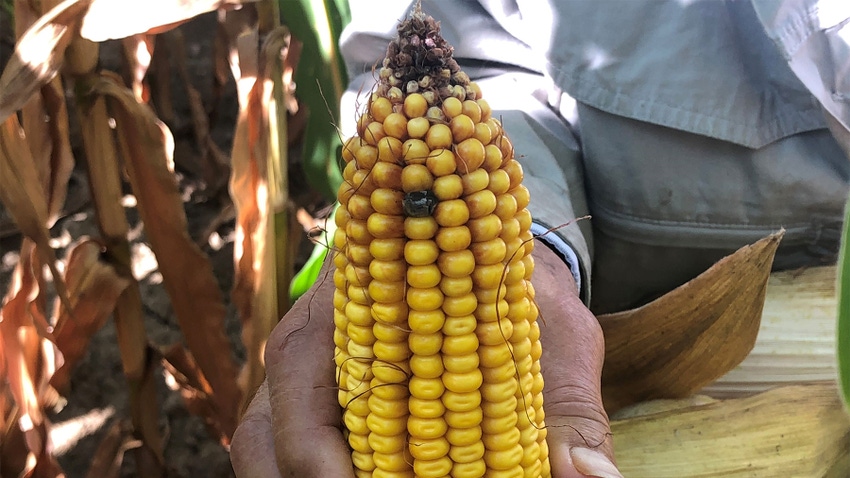
Dave Nanda previously reported not finding ear molds in corn like he found at the same time a year ago. When he visited the Corn Watch ’23 field in central Indiana in mid-September, he didn’t find signs of fusarium, gibberella, diplodia or other ear molds working on ears. One year ago, with a stressful summer followed by rain continuing into September, ear molds were prevalent in some fields. Only a dry late September and October prevented even larger problems a year ago.
“It went back dry and hot in late August this year, and while it isn’t favorable for peak grain fill, it likely did help shut down disease during that stretch,” says Nanda, director of genetics for Seed Genetics Direct, sponsor of Corn Watch ’23. “Unless rainy weather returns before corn is harvested, diseases that depend on moist conditions for inoculum present in the field to develop will likely remain at low levels, if they show up at all.”
However, that doesn’t mean the 2023 corn crop still in the field is out of the woods for ear diseases yet.
“The one big exception is aspergillus ear mold, which is actually favored by dry weather at certain times,” Nanda says. “It will be worth monitoring just to make sure it isn’t an issue.”
Ugly reminder
One kernel on one ear Nanda pulled and examined at the Corn Watch ’23 field during his visit didn’t trigger alarm bells, but it should remind everyone to remain vigilant, he says. While not positively identified by pathologists, it had the earmarks of a kernel infected by aspergillus fungus.
“It’s one kernel on one ear out of a couple dozen I looked at,” he notes. “We’re not trying to alarm anyone. We’re just pointing out that it is a reminder that the inoculum for this disease is out there. Given the right conditions, it can develop.”
According to the Purdue Corn & Soybean Field Guide, the fungus causing aspergillus ear rot is favored by hot, dry weather at silking and up to three weeks post-silking. When it develops on the ear, symptoms include masses of olive-green spores on kernels. If the infection takes off, it typically spreads across the ear.
The concern with aspergillus and related ear rots, including penicillium ear rots, is that they can produce mycotoxins harmful to humans and livestock. Aspergillus can produce aflatoxin. Depending on where you sell grain and if issues with mycotoxins are suspected, corn may be screened for the toxin in some situations.
Nanda doesn’t expect this type of mold to become a big concern this year. “Just know it is still out there, and that it makes good sense to keep your eyes open when checking your fields and getting ready for harvest,” he says. “If you see something unusual, do your best to track down the cause.”
Read more about:
MoldAbout the Author(s)
You May Also Like




